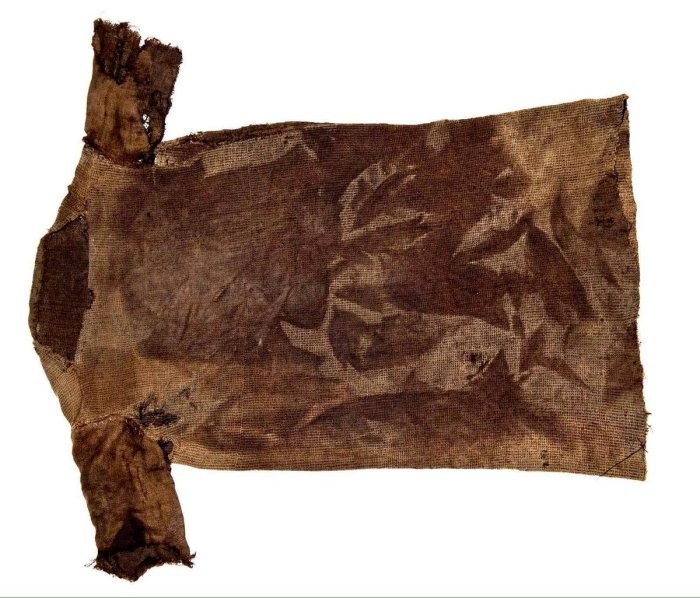Reconstructed – Incredibly Well-Preserved 1,700-Year-Old Lendbreen Tunic – Norway’s Oldest Piece Of Clothing
Finding ancient well-persevered clothes is not something that happens daily. This is why this particular 1,700-year-old tunic is so special. It is Norway’s oldest piece of clothing and despite being hidden beneath the snow for so many years, it’s still very well-preserved.

The Iron Age tunic from Lendbreen is the oldest preserved garment in Norway. Credit: Marianne Vedeler
“It’s very rarely that we find well-preserved clothing from prehistoric times,” explains Marianne Vedeler, professor at the Museum of Cultural History at the University of Oslo to Yngve Vogt of the Apollan Research Magazine. “Only a handful of clothing like this has been found in Europe.”

Fieldwork at the Lendbreen Glacier where archaeologists stumbled across the tunic. Credit: Secrets of the Ice
With climate change melting glaciers like the Lendbreen at unprecedented rates, hundreds of artifacts emerge from the ice every summer, presenting clues to piecing together the lives of communities dependent on glaciers and the interconnected relationship between humans and the rest of the environment.
Not far from the tunic, scientists also found a woven mitten. ” We speculated if the tunic and the mitten were connected in some way, but the radiocarbon date of the mitten showed that it was c. 1100 years old, from the Viking Age.
More than 70 pieces of textile have also been found at the ice sites in Oppland. These appear to be cut-off pieces of textile, or simply rags. They had reached the end of their life as clothes and were being used for a variety of purposes,” the research team said.

Archaeologists and conservators are now trying to learn more about the clothing’s mysterious past. Who wore the tunic? Why was it left in the glacier? How was it made? What raw materials were used, and how time-consuming was the process?
The Lomseggen mountain, home to the Lendbreen glacier, now separates the modern villages of Lom and Skjak. Archaeologists determined that this was once a passage used during the Iron Age as a transport route for people traveling between valleys such as Bøverdalen and Ottadalen.

The original Lendbreen Tunic. Credit: Marianne Vedeler
It is also relatively short, with historians concluding it was meant for a man or boy of slender build. Overall, specialists claim the yarns and patterns in the tunic were of a standard Iron Age practice and not requiring expert knowledge to produce.

However, it is evident the tunic was time-consuming to make. “In prehistory, the time spent on fiber preparation, spinning, and weaving must have varied greatly depending on differences in the raw materials and the tools used, and the knowledge and skills of the people producing the textiles,” stated the study, “It must still have been a very time-consuming task to produce a textile. This applies to everyday fabrics as well as to the most valuable ones.”
The Lendbreen tunic will be exhibited at the Norwegian Mountain Center in Lom and the Museum of Cultural History in Oslo.
Related Post
A shocking documentary proves that mermaids do exist
SHOCKING Revelation: Thuya, Mother of Queen Tiye, Was the Grandmother of Akhenaten and Tutankhamun—What Ancient Egyptian Secrets Did She Leave Behind?
Breaking News: Astonishing Discoveries at Karahan Tepe Confirm an Extraterrestrial Civilization is Hiding on Earth, and NO ONE Knows!
Breaking News: Researchers FINALLY Discover U.S. Navy Flight 19 After 75 Years Lost in the Bermuda Triangle!
NASA’s Secret Investigation: Uncovering the Astonishing Mystery of the UFO Crash on the Mountain!
Explosive UFO Docs LEAKED: Startling Proof That Aliens Ruled Ancient Egypt!